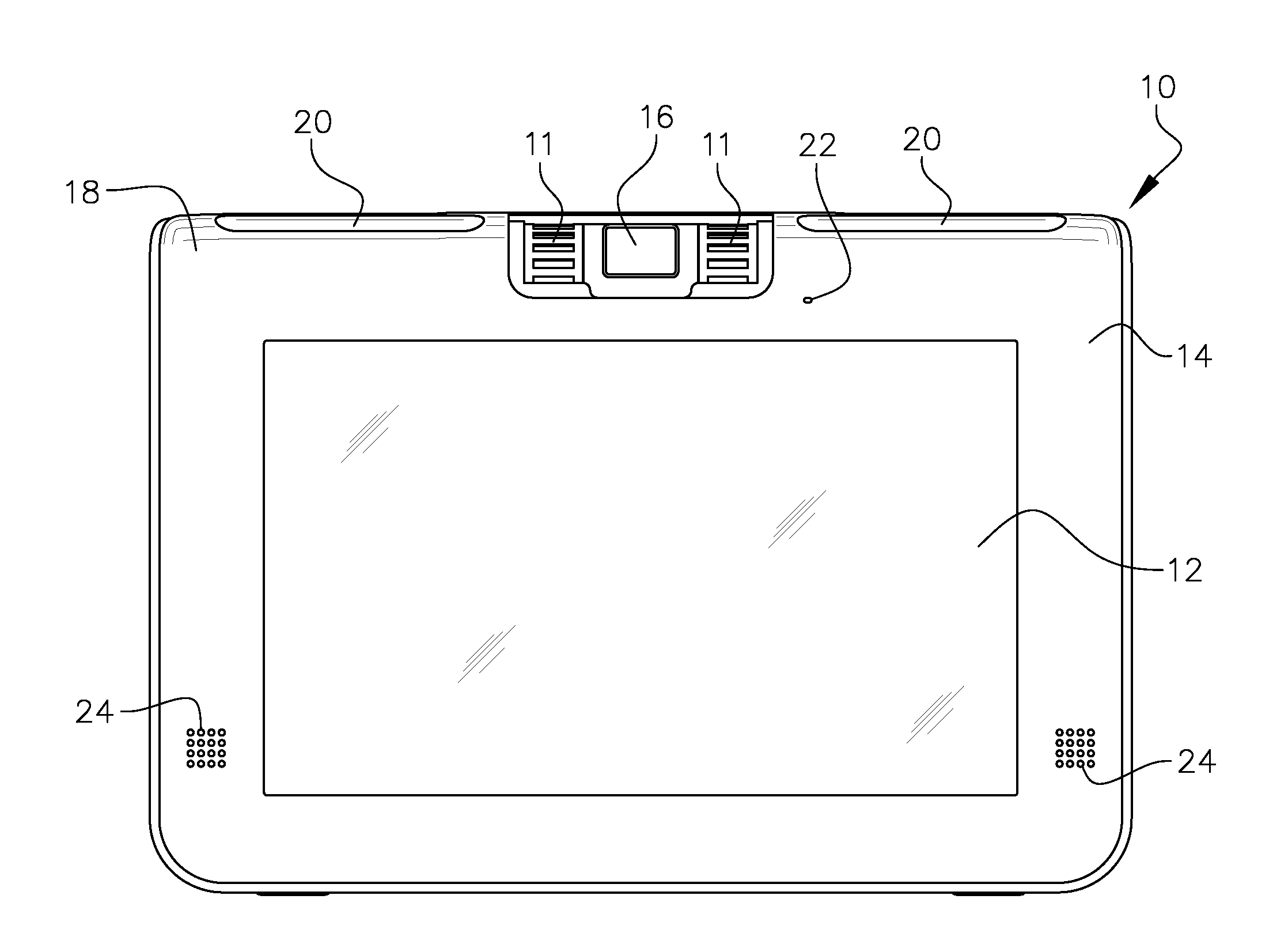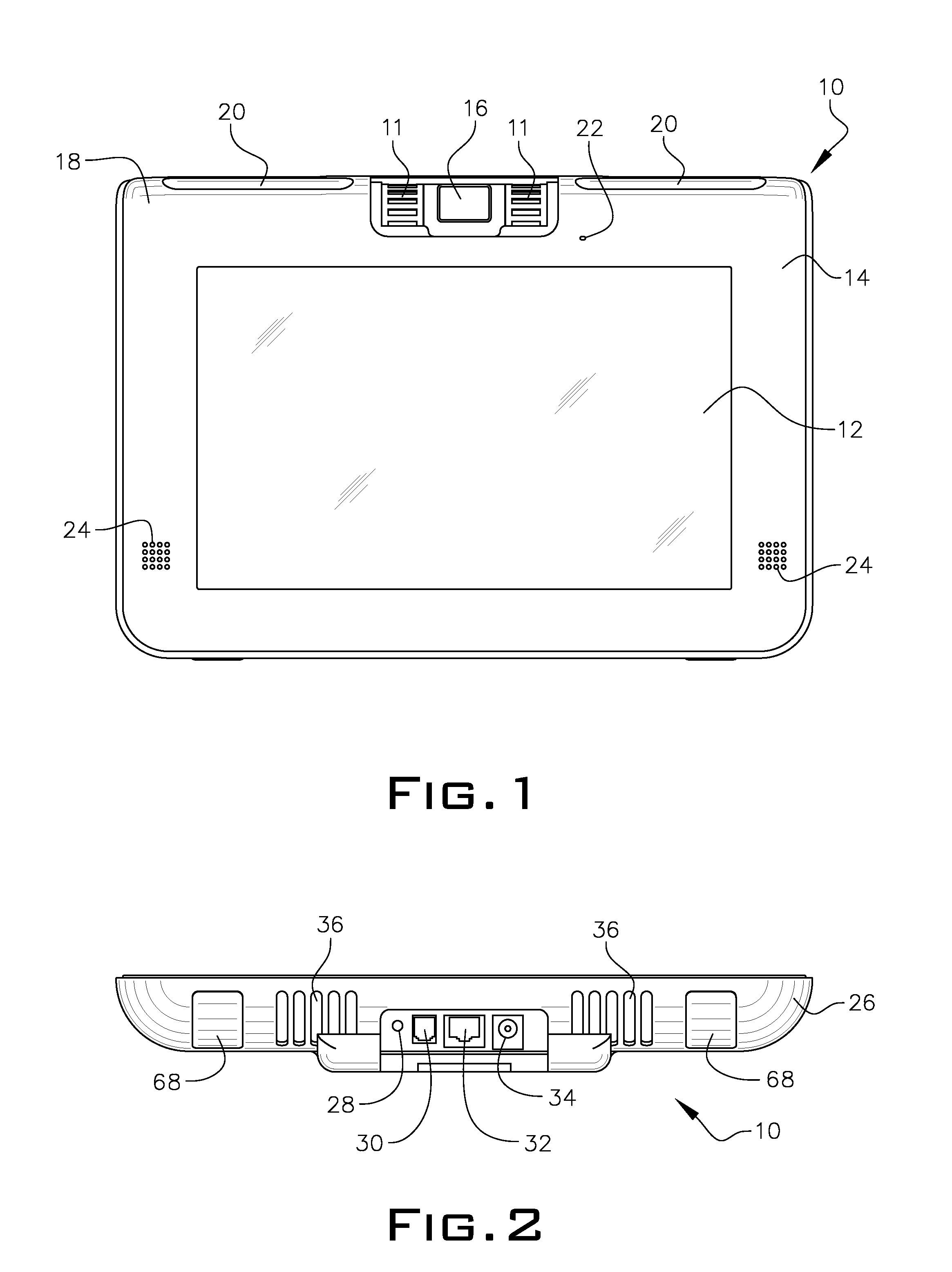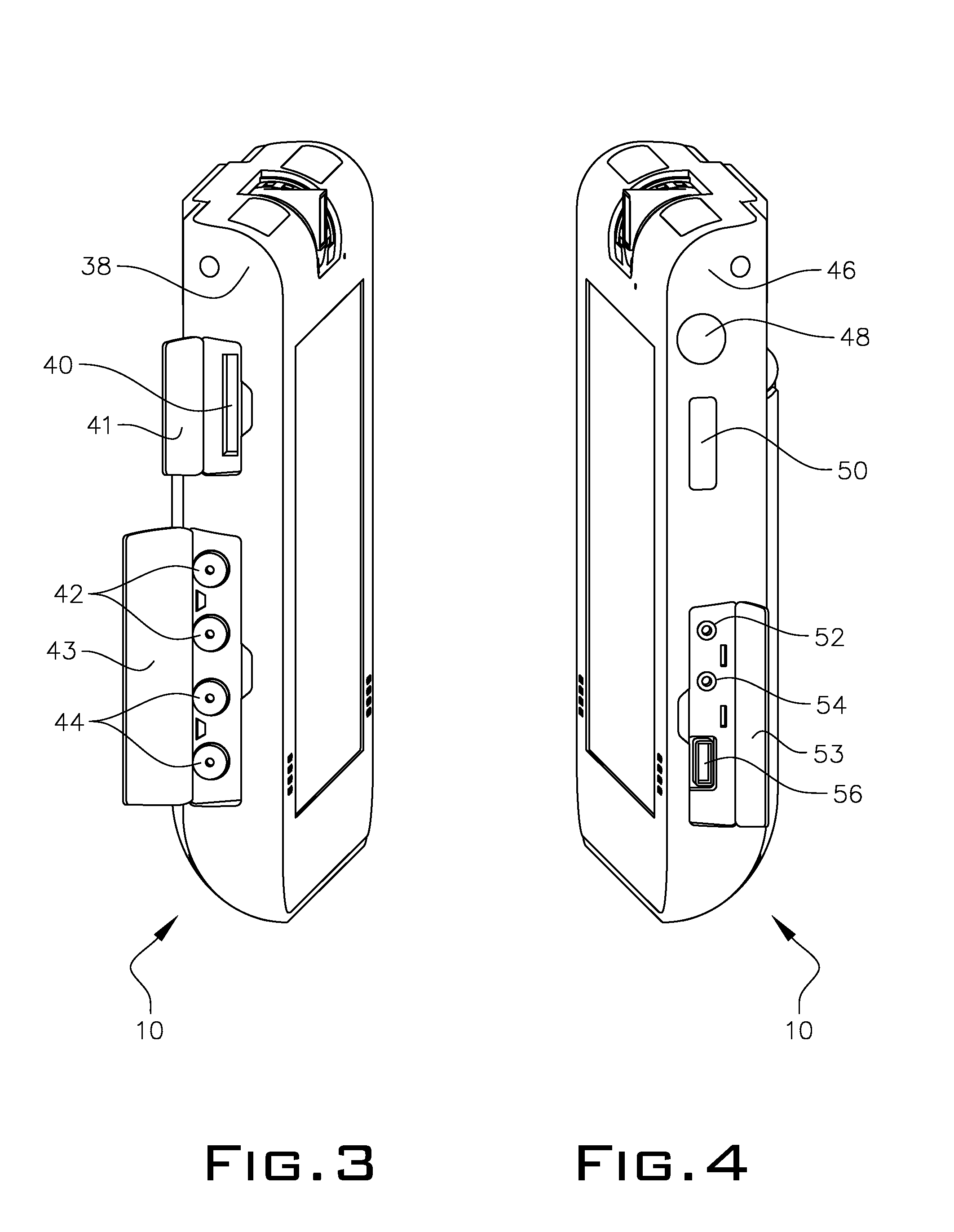Audio video communications device
a communication device and audio technology, applied in the field of audio video communication devices, can solve the problems of time-consuming and difficult text input, and achieve the effect of convenient transportation and small siz
- Summary
- Abstract
- Description
- Claims
- Application Information
AI Technical Summary
Benefits of technology
Problems solved by technology
Method used
Image
Examples
Embodiment Construction
, contained herein below, may be better understood when accompanied by a brief description of the drawings, wherein:
[0024]FIG. 1 is a front plan view of the novel audio video communication device of the present invention;
[0025]FIG. 2 is a bottom plan view thereof;
[0026]FIG. 3 is a left side view thereof;
[0027]FIG. 4 is a right side view thereof;
[0028]FIG. 5 is a back side perspective view of the novel audio video communication device of the present invention showing a kickstand in its “non-engaged” position;
[0029]FIG. 6 is a left side perspective view thereof showing the kickstand in its “engaged for use” position;
[0030]FIG. 7 is a left side perspective view thereof showing the kickstand in a “pivoted-out” position illustrating how rubber stoppers are removed from the kickstand for subsequent attachment of a separate mounting device to the device;
[0031]FIG. 8 is a back side perspective view illustrating how a separate mounting device (in this figure a wall-arm mounting device) is at...
PUM
 Login to View More
Login to View More Abstract
Description
Claims
Application Information
 Login to View More
Login to View More - R&D
- Intellectual Property
- Life Sciences
- Materials
- Tech Scout
- Unparalleled Data Quality
- Higher Quality Content
- 60% Fewer Hallucinations
Browse by: Latest US Patents, China's latest patents, Technical Efficacy Thesaurus, Application Domain, Technology Topic, Popular Technical Reports.
© 2025 PatSnap. All rights reserved.Legal|Privacy policy|Modern Slavery Act Transparency Statement|Sitemap|About US| Contact US: help@patsnap.com



